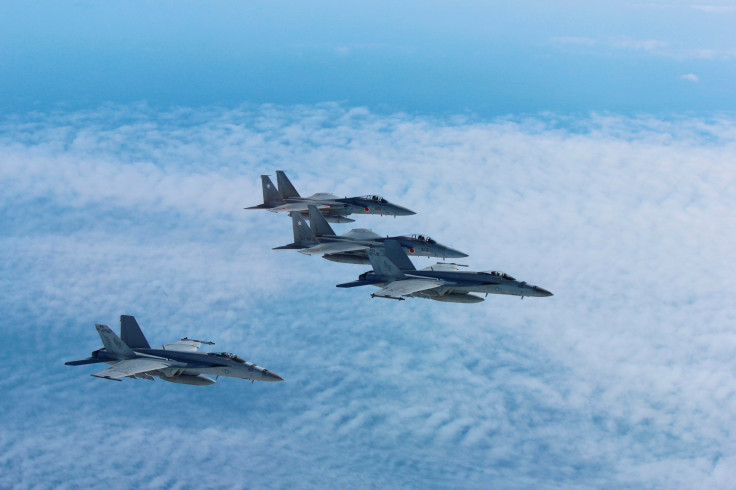US F-15 Fighter Jet Crashes In Japan, Pilot In Serious Condition

A U.S. Air Force F-15 jet crashed into the sea off southern Japan at 6.40 a.m. local time on Monday (5.40 p.m. EDT, Sunday), shortly after taking off from the U.S Air Force's Kadena Base, Japan.
The plane's pilot, the only person in the aircraft, ejected shortly before the crash and was safely recovered by search and rescue teams.
Here is all the latest information we have. Thank you again to the Naha Rescue Squadron. Our prayers continue to stay with the pilot and his family. @USAirForce @PacificCommand @USForcesJapan @PACAF @KadenaAirBase_J pic.twitter.com/Dsv0Yy0UAI
— Kadena Air Base (@KadenaAirBase) June 11, 2018
However, Kadena airbase later posted on Twitter that the pilot is in a serious condition.
“We have been notified that the pilot is in serious condition. Our hearts and prayers go to the pilot and his family as they go through this difficult time,” Kadena airbase wrote on their Twitter account. The pilot was transferred to the U.S. Naval Hospital at Camp Foster by JASDF Naha Rescue Squadron soon after the accident.
Officials said the incident took place during a routine training mission which involved six other aircraft. The U.S. military has launched an investigation into the crash.
“Huge thank you to the Japan Air Self-Defense Force search and rescue team out of Naha Air Base this morning. Your quick response proves once again how valuable an asset you are to the U.S./Japanese alliance,” Kadena Air Base, where around 47,000 American troops are based, said in a statement on Twitter.
This accident has again raised questions about the safety of U.S. military flights in the region, after a series of emergency landings and parts falling from U.S. military aircraft.
Defense Minister Itsunori Onodera said, “U.S. military aircraft accidents keep happening again and again,” the Asahi Shimbun reported.
“I want to firmly demand safe flights,” he said adding that he has asked the U.S. military to implement safety management thoroughly and take measures to prevent a recurrence.
“I will ask for detailed reports about why it happened,” he added.
In a similar incident in May 2013, an F-15 fighter jet crashed into the Pacific Ocean off the southern Japanese island of Okinawa due to technical problems in flight. The pilot remained in contact with the rescuers after ejecting himself from the plane and was rescued.
“If the problems remain unresolved and another crash occurs, people may become used to it and think that this is how things stand in Okinawa Prefecture,” said Okinawa Governor Takeshi Onaga.
“If that happens, we cannot fulfill our responsibilities to our children and grandchildren,” Onaga said. “The Japanese government doesn’t have the capacity to address the problems as its own,” the governor added.
F-15 local training has been temporarily stopped while the operational, maintenance and safety procedures are being reviewed at the base.
The U.S. Air Force is also considering replacing the F-15s, worth around $36 million each, with F-16 fighting falcons by 2020.
Many local residents associate the U.S. military base in Okinawa with crime, accidents and pollution, Reuters reported.
The Japanese government is therefore moving ahead with the plan to relocate the airbase from an urban area in central Okinawa to the less populated Henoko district.
© Copyright IBTimes 2024. All rights reserved.





















